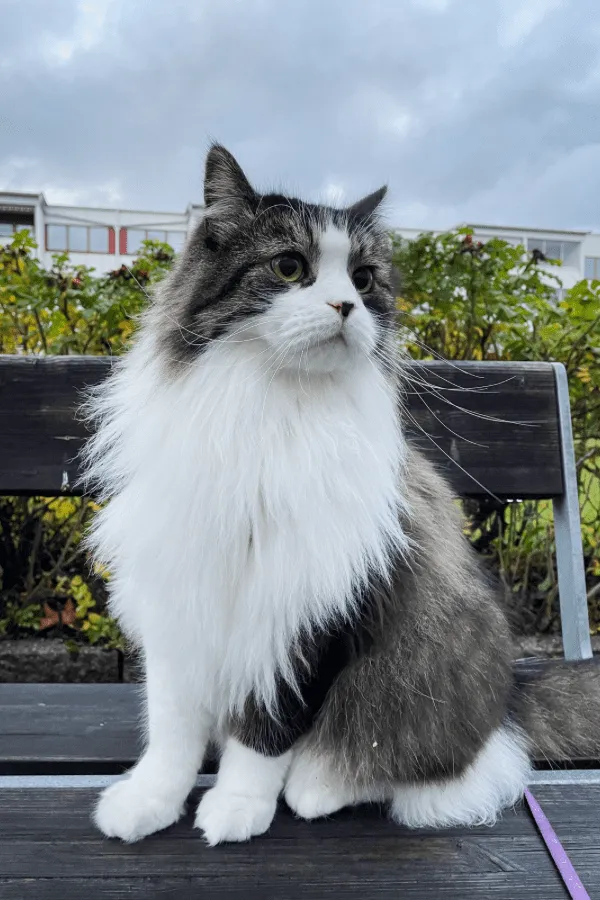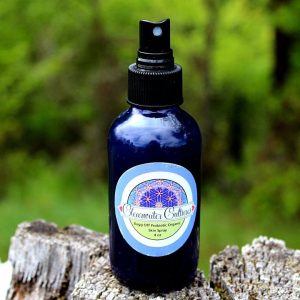
Big house cats are not your average feline companions. These magnificent creatures possess a regal air and an undeniable presence that is sure to turn heads. With their larger-than-life size and striking features, they are truly a sight to behold. From their majestic mane-like coats to their piercing eyes that seem to hold ancient wisdom, big house cats are in a league of their own. But what makes these extraordinary cats so captivating? Let’s delve deeper into this fascinating realm and discover what sets them apart.
Picture this: you walk into a room and see a creature that could easily be mistaken for a small lion or tiger. Your heart skips a beat as you’re taken aback by its sheer magnificence. Its massive paws silently padding across the floor, leaving a trail of awe in its wake. How did this majestic beast end up in someone’s home? How do they navigate everyday life with such a powerful presence? These questions and more will be answered as we embark on a journey to uncover the secrets and wonders of big house cats. Get ready to be enthralled as we unravel the mystery behind these captivating creatures and explore their extraordinary world.
When it comes to big house cats, there are certain challenges that owners often face. Firstly, these majestic creatures require a significant amount of space to roam and play. Their large size means that they can easily knock over furniture or break delicate items, causing frustration and potential financial strain. Additionally, their dietary needs can be quite demanding, with a requirement for high-quality, protein-rich food that can be costly to maintain. Furthermore, grooming a big house cat can be a time-consuming task due to their thick fur, which can easily become tangled and matted. Lastly, these cats tend to have a strong prey drive, leading to potential issues with other household pets or wildlife in the area. Despite the joys of having a big house cat as a companion, these challenges should be taken into consideration before bringing one into your home.
In relation to big house cats and their associated keywords, it is evident that these magnificent felines require special attention and care. Firstly, owners must provide ample space for their cats to roam and play freely. This includes ensuring that their living environment is both safe and suitable for their size, as well as providing entertainment and stimulation to prevent boredom. Additionally, a balanced and high-quality diet is crucial for the overall health and well-being of big house cats. This entails feeding them nutrient-rich food that supports their unique dietary needs. Furthermore, grooming plays a vital role in maintaining the appearance and hygiene of these cats, as their thick fur requires regular brushing and occasional bathing. Lastly, it is important for owners to understand and manage their big house cat’s prey drive, ensuring the safety of other pets and wildlife in the vicinity. By addressing these key aspects, owners can provide a fulfilling and enriching life for their beloved big house cats.
Introduction
Welcome to the wonderful world of big house cats! These magnificent creatures possess a unique charm and elegance that captivates cat lovers all around the globe. In this article, we will delve into the mesmerizing characteristics, behavior, and care required for these majestic felines. Prepare yourself for an exciting journey filled with fascinating insights about these larger-than-life companions!
{{section1}}: Understanding Big House Cats
Big house cats, also known as large domestic cats, are a breed apart from their smaller counterparts. While most domesticated cats weigh between 8 to 10 pounds, big house cats can tip the scales at an impressive 15 to 25 pounds or more. These feline giants have a commanding presence and a muscular build that sets them apart in terms of size and strength.
Distinct Breeds
There are several distinct breeds of big house cats that enthusiasts adore. One such breed is the Maine Coon, which hails from the northeastern United States. Known for their tufted ears and luxuriously long fur, Maine Coons are affectionate and sociable companions. Another remarkable breed is the Norwegian Forest Cat, originating from the forests of Norway. These cats possess a thick double coat, sturdy bodies, and a playful nature. Ragdolls are another popular breed known for their striking blue eyes and docile temperament. These gentle giants love nothing more than curling up in your lap for a cozy snuggle session.
Physical Characteristics
Big house cats boast a wide array of physical features that contribute to their grandeur. Their large, expressive eyes come in various shades, ranging from striking greens to deep golds, giving them a captivating gaze. Their robust bodies are supported by strong, muscular legs, allowing them to move with grace and agility. These cats often have tufted ears and bushy tails, adding to their majestic appearance. Their fur can come in a variety of colors and patterns, making each individual unique and beautiful.
Personality Traits
While big house cats may look imposing, they possess personalities that are as gentle as their giant paws. These felines are known for their docile and friendly nature, often getting along well with children and other pets. They enjoy human companionship and are often described as being affectionate and loyal. Despite their size, big house cats are generally not aggressive and prefer engaging in playful activities rather than displaying territorial behavior. They make excellent indoor companions due to their adaptability and ability to thrive in various living environments.
{{section2}}: Caring for Big House Cats
Caring for big house cats requires attention to their unique needs and characteristics. From nutrition to exercise, providing the right care will ensure their health and happiness.
Nutrition
Feeding big house cats a balanced diet is crucial for maintaining their optimal health. Due to their larger size, these cats require more calories and nutrients than their smaller counterparts. High-quality cat food specifically formulated for large breeds is recommended to meet their dietary requirements. It is important to consult with a veterinarian to determine the appropriate portion sizes and feeding schedule based on the cat’s age, weight, and activity level. Additionally, fresh water should always be available to keep them hydrated.
Grooming
Big house cats often have long or semi-long coats, which require regular grooming to keep them looking their best. Brushing their fur a few times a week helps prevent matting and reduces the amount of hair they shed around the house. This grooming routine also helps to strengthen the bond between cat and owner, providing a pleasant and relaxing experience for both. Regular nail trimming and dental care are also essential to maintain their overall well-being.
Exercise
While big house cats may not be as active as some smaller breeds, regular exercise is still important to keep them in good physical condition. Engaging in interactive play sessions with toys or using puzzle feeders can help stimulate their minds and keep them entertained. Despite their size, they are often agile and enjoy climbing on specially designed cat trees or scratching posts. Providing a variety of toys and environmental enrichment will ensure they remain mentally and physically stimulated.
Regular Veterinary Care
Just like any other cat, big house cats require regular veterinary check-ups to ensure their continued health and well-being. Routine vaccinations, parasite prevention, and annual wellness exams are essential to detect any potential health issues early on. These visits also provide an opportunity to discuss any specific concerns or questions with your veterinarian.
{{section3}}: The Joys of Big House Cat Ownership
Owning a big house cat is a truly rewarding experience that brings joy and companionship into your life. Let’s explore the many reasons why these majestic felines make wonderful additions to any household.
Loving Companions
Big house cats are known for their loving nature and strong bonds with their human companions. They thrive on affection and enjoy spending time with their owners, often seeking out opportunities for snuggles and lap time. Their calm and gentle demeanor makes them ideal for families with children or other pets, as they tend to adapt well to different social dynamics.
Entertainment Galore
Being larger in size doesn’t diminish their playful spirit! Big house cats are known for their entertaining antics, providing endless amusement for their owners. Whether it’s chasing toys, pouncing on laser pointers, or engaging in a game of hide-and-seek, these feline giants know how to keep their human counterparts entertained for hours on end.
Conversation Starters
Owning a big house cat is sure to turn heads and spark conversations. Their impressive size and unique appearance often capture the attention and curiosity of others. Walking down the street with one of these majestic creatures at your side is bound to attract compliments and inquiries, making them excellent conversation starters and a source of pride for their owners.
Unconditional Love
Big house cats have an incredible capacity for love and can form deep emotional bonds with their owners. Their unwavering loyalty and affection make them exceptional companions during both joyful and challenging times. Whether you need a comforting presence or a listening ear, these magnificent felines will always be there for you, providing unwavering support and unconditional love.
Conclusion
Big house cats are truly remarkable creatures that bring a touch of majesty and splendor to any household. Their unique physical characteristics, gentle personalities, and loving nature make them irresistible companions. By understanding and meeting their specific needs, including proper nutrition, grooming, exercise, and veterinary care, you can ensure a happy and fulfilling life for these magnificent feline friends. So, open your heart and home to a big house cat, and embark on an extraordinary journey filled with love, laughter, and countless memories!
Big House Cats
Big House Cats are domesticated feline companions that belong to larger breeds. These magnificent cats are known for their impressive size, often resembling small wildcats. While most people are familiar with common house cat breeds such as the Siamese or Persian, big house cats offer a unique and captivating presence in households around the world.One popular example of a big house cat is the Maine Coon. Originating from the state of Maine in the United States, these cats can reach an average weight of 13-18 pounds for males and 8-12 pounds for females. Their large size is complemented by their long, shaggy fur, tufted ears, and bushy tails. Maine Coons are highly sociable, intelligent, and gentle, making them great companions for families and individuals alike.Another notable breed of big house cats is the Savannah. Savannahs are a crossbreed between a domestic cat and a serval, a medium-sized African wildcat. They are often recognized for their striking coat patterns and elongated bodies. Weighing between 12-25 pounds, Savannahs are incredibly active and possess a highly curious nature. Due to their wild ancestry, they require plenty of mental and physical stimulation to thrive.In addition to Maine Coons and Savannahs, other big house cat breeds include the Ragdoll, Norwegian Forest Cat, and Bengal. Each breed brings its own unique qualities and characteristics to the table, adding diversity to the world of big house cats.
Listicle of Big House Cats
When it comes to big house cats, there is a wide range of breeds to choose from. Let’s explore a listicle of some of the most popular big house cats, highlighting their distinct features and traits:1. Maine Coon: Known for their large size and gentle nature, Maine Coons are often referred to as gentle giants. They have long, tufted ears and a thick, water-resistant coat.2. Savannah: This breed combines the elegance of a wildcat with the affectionate nature of a domestic cat. Savannahs are highly active and require plenty of space to roam.3. Ragdoll: Ragdolls are famous for their docile and relaxed temperament. They have striking blue eyes and silky, semi-long fur that comes in various colors and patterns.4. Norwegian Forest Cat: Originating from the forests of Norway, these cats have a majestic appearance with a thick double coat, tufted ears, and large paws. They are excellent climbers and hunters.5. Bengal: With their striking spotted or marbled coat, Bengals resemble miniature leopards. They are highly energetic and playful, often enjoying interactive games and puzzles.Big house cats offer an exciting alternative to traditional house cat breeds, bringing a touch of the wild into our homes. Whether you prefer the gentle companionship of a Maine Coon or the exotic allure of a Savannah, these majestic felines are sure to captivate and enrich our lives.
Question and Answer: Big House Cats
1. Q: What breeds of cats are considered big house cats?
A: Some breeds of big house cats include Maine Coons, Savannahs, Ragdolls, and Norwegian Forest Cats.
2. Q: How large can big house cats grow?
A: Big house cats can vary in size, but on average, they can weigh between 12 to 25 pounds and measure up to 40 inches in length.
3. Q: Do big house cats require special care compared to regular-sized cats?
A: While big house cats may need more space and larger litter boxes, their care requirements are generally similar to other cats. Regular grooming, vet check-ups, and a balanced diet are essential.
4. Q: Are big house cats suitable for families with children?
A: Yes, many big house cat breeds are known for their gentle and friendly nature, making them great companions for families with children. However, it’s always important to supervise interactions between cats and young children.
Conclusion of Big House Cats
In conclusion, big house cats come in various breeds, such as Maine Coons, Savannahs, Ragdolls, and Norwegian Forest Cats. They can grow to be quite large, weighing between 12 to 25 pounds and measuring up to 40 inches in length. Although they may require more space and larger litter boxes, their care needs are generally similar to regular-sized cats. Big house cats can make wonderful family pets and are often known for their gentle and friendly nature, making them suitable companions for families with children.
To summarize:
- Big house cats can be Maine Coons, Savannahs, Ragdolls, or Norwegian Forest Cats.
- They can weigh between 12 to 25 pounds and measure up to 40 inches in length.
- They require similar care to regular-sized cats but may need more space and larger litter boxes.
- Big house cats are generally suitable for families with children, but supervision is important.
Thank you so much for taking the time to explore our blog on Big House Cats! We hope you have enjoyed learning about these magnificent felines as much as we have enjoyed sharing our knowledge with you. Before we wrap up, we would like to leave you with a few final thoughts on these extraordinary creatures.
First and foremost, it is important to recognize that big house cats are not your average domesticated pets. They are majestic beings that possess an innate grace and power. From their striking physical features to their confident demeanor, big house cats demand respect and admiration. Being in the presence of such regal creatures is truly a humbling experience.
Furthermore, big house cats play a crucial role in maintaining the delicate balance of our ecosystems. As apex predators, they help regulate populations of smaller animals, preventing overpopulation and contributing to the overall health of their habitats. By understanding and appreciating the importance of big house cats, we can work towards preserving their natural environments and ensuring their longevity for future generations to admire.
In conclusion, exploring the world of big house cats has been an incredible journey. These magnificent creatures captivate us with their beauty, strength, and significance in the natural world. We hope this blog has inspired you to delve deeper into the wonders of these felines and to spread awareness about their conservation. Remember, every effort counts, no matter how small, in preserving the legacy of these awe-inspiring creatures. Thank you once again for joining us, and we look forward to welcoming you back to our blog soon!





